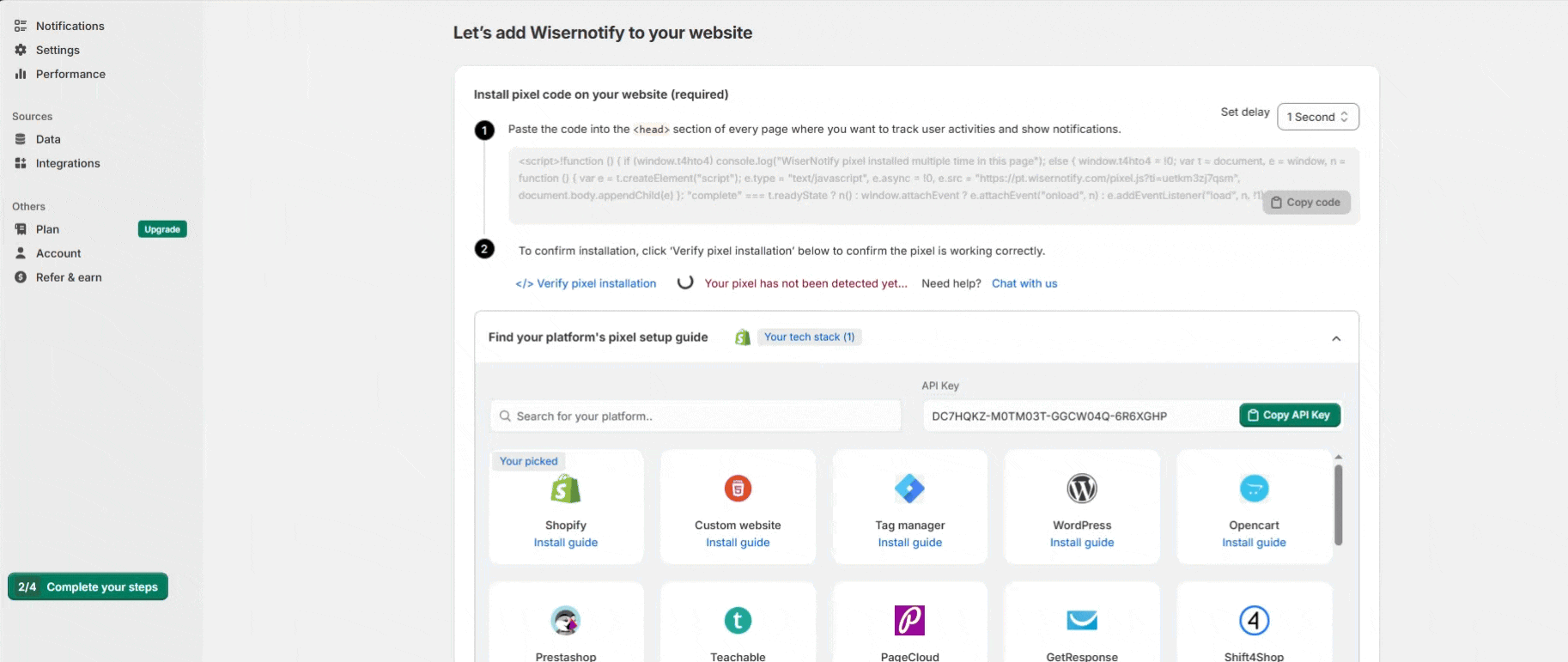How to Add Social Proof on a Website Using WiserNotify
Show what others are doing such as signing up, buying, or leaving reviews. With WiserNotify, you can turn visitor actions into social proof that builds confidence and drives more conversions.
Made for low traffic site
Use single visit notifications to show single visits.




Leverage social media post
Display social media post on your site to build trust Display purchase notifications on the checkout page to boost confidence.




Personalize social proof
Remove design & use in-line text to show social proof notification




How WiserNotify Works?
Turn passive visitors into confident buyers. With WiserNotify, you can build trust, boost urgency, and show your site’s real activity all without writing a single line of code.
Step 1: Sign Up for WiserNotify
Go to wisernotify.com and create a free account.
No credit card required for signup.
Step 2: Install the Pixel Code on Your Platform & Website
- After login in, WiserNotify will prompt you to install the pixel code.
- Copy & paste the script into your site’s <head> section, OR
- Use prebuilt integrations (e.g., Shopify, WordPress, Tag Manager, etc.).
- Verify installation using the “Verify pixel installation” button.
Step 3: Connect Your Data Sources
Go to Integrations from the left menu.
Choose and connect your tools:
CRMs (ActiveCampaign, Agile CRM)
Email (Mailchimp, ConvertKit)
eCommerce (Shopify, ThriveCart)
Booking and more.
These connections allow WiserNotify to pull data like signups, purchases, and subscribers.
Step 4: Create a New Notification


- Click “Add Notification” on the top right.
- Choose from 30+ templates:
- Recent Activity
- Conversion Count
- Reviews & Ratings
- Countdown Timers
- Call-to-Actions
- Click on a template to start editing.
Step 5: Customize Your Notification


Edit text, icon, image, and animation style.
Adjust position (top/bottom, left/right), delay, and duration.
Match colors and fonts to your site branding.
Step 6: Set Targeting Rules
- Choose where and to whom the notification appears:
- Specific pages (e.g., landing pages, product pages)
- Devices (desktop or mobile)
- Traffic source, location, and more
Step 7: Preview and Publish
Preview the notification to see how it will appear.
Click “Publish” to make it live.
You can pause, edit, or duplicate it anytime.
Step 8: Monitor Performance


- Go to the Performance tab to track:
- Click-through rate (CTR)
- Conversions generated.
- Use data to optimize your setup for better results.




















